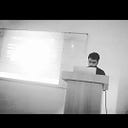What the heck is Quantum Physics??
Quantum physics is the physics that explains how everything works. Quantum physics is a branch of physics that is the study of matter and energy. The matter is composed of a large number of oscillating particles, which vibrate with different frequencies. These particles of matter have any value of frequency and vibrations.
Energy comes in the form of packets called quanta. These packets cannot be divided further into components. Thus, quantum physics is a modern physical term that is based on theoretical concepts.
Quantum physics underlies how atoms work, and so why chemistry and biology work as they do. If you want to explain how electrons move through a computer chip, how photons of light get turned into electrical current in a solar panel or amplify themselves in a laser, or even just how the sun keeps burning, you’ll need to use quantum physics.
To begin with, there’s no single quantum theory. There is quantum mechanics, the basic mathematical framework that underpins it all, was first developed in the 1920s by Niels Bohr, Werner Heisenberg, Erwin Schrödinger, and others. It characterizes simple things such as how the position or momentum of a single particle or group of few particles changes over time.
But to understand how things work in the real world, quantum mechanics must be combined with other elements of physics. A. Einstein’s special theory of relativity, explains what happens when things move very fast to create what is known as quantum field theories.
Three different quantum field theories deal with three of the four fundamental forces by which matter interacts: “electromagnetism”, which explains how atoms hold together; “the strong nuclear force”, which explains the stability of the nucleus at the heart of the atom; and “the weak nuclear” force, which explains why some atoms undergo radioactive decay.
Quantum Theory of Radiations:-After the development of quantum theory by Max Planck in 1900, Einstein extended the theory around 1905. Planck’s study of black body radiations concludes that absorption or emission of thermal energy is not a continuous process. It takes place in discrete forms.
According to Einstein’s theory,
The light energy is emitted by the indivisible amounts of radiant energy called quanta.
The quanta travel in space in the form of packets or bundles.
These packets are called photons. It carries a definite amount of energy.
The energy carried by a particular phone is given by:
E = hf
where, h is Planck’s constant & f is the frequency of radiation.
Quantum States:-Quantum state is defined as the entity that provides the probability distribution of the outcomes. It is calculated for every possible measurement of the system. The knowledge about Quantum states helps us to predict the system’s behavior.
Quantum states are categorized as pure Quantum states and mixed Quantum states. The pure Quantum states cannot be written as the mixture of other states, while mixed Quantum states can be expressed in the form of other states or mixed states.
Let the 2D vector components be a and b. A pure Quantum state can be expressed as:
|a|² + |b|² = 1
where, |a| and |b| are called absolute values of a and b.
The probability distribution for various measurements is illustrated by the uncertainty principle. The uncertainty principle illustrates the probability distribution for various measurements. It is a mathematical inequality that can determine certain physical quantities, such as momentum, position, particle, and initial conditions.
Other applications include Quantum Computing, Quantum Optics, Quantum Biology, Quantum Chemistry, Quantum Electronics, Optical Amplifiers, Superconducting Magnets, Laser, Quantum Cryptography, Quantum Coherence, etc.
A real-life example of Quantum Physics:-
- GPS(Global Positioning System): Navigating to unknown locations has never been easier than it has been with the aid of Quantum Physics. While using a mobile phone for navigation, the GPS receiver in the phone is responsible for picking up the signal from multiple clocks. The distance and time between your current location and the destination are calculated by calculating different arrival times from different satellites. Moreover, even the distance from your current location from each satellite is also calculated. Each satellite is equipped with an atomic clock, which relies on Quantum Physics only.
- MRI(Magnetic Resonance Imaging): Magnetic Resonance Imaging, also known as Nuclear Magnetic Resonance, involves the reversal of the spins of the electrons in hydrogen nuclei. So, basically, we are talking of a shift in energies; which is nothing but one of the applications of Quantum Physics. The study of soft tissues can easily be carried out with the use of MRI. Thanks to Quantum Physics that the diagnosis and treatment of some life-threatening ailments have been possible.
Over the past five decades or so these three theories have been brought together in a ramshackle coalition known as the “standard model” of particle physics. For all the impression that this model is slightly held together with sticky tape, it is the most accurately tested picture of matter’s basic working that’s ever been devised. Its crowning glory came in 2012 with the discovery of the Higgs boson, the particle that gives all other fundamental particles their mass, whose existence was predicted on the basis of quantum field theories as far back as 1964.
To sum up, Quantum physics is the study of matter and energy at its most fundamental level. A central tenet of quantum physics is that energy comes in indivisible packets called quanta. Quanta behave very differently from macroscopic matter, particles can behave like waves, and waves behave as though they are particles.
To learn more about Quantum physics and other cool stuff, connect by hitting follow button.
